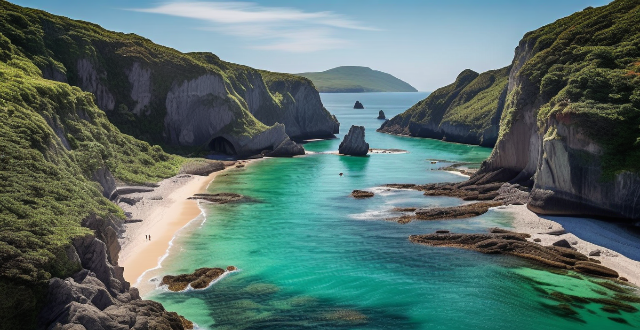Ecological protection areas are vital for sustainable tourism, conserving resources and biodiversity while offering unique experiences to visitors. They also provide educational opportunities and support local livelihoods, promoting long-term sustainability and planetary health.

The Role of Ecological Protection Areas in Sustainable Tourism Development
Ecological protection areas play a crucial role in sustainable tourism development. These areas are designated to conserve natural resources, protect biodiversity, and maintain ecological balance. In the context of tourism, they provide unique opportunities for visitors to experience nature while promoting environmental conservation. Here are some key ways in which ecological protection areas contribute to sustainable tourism:
Conservation of Natural Resources
- *Habitat Preservation*: Ecological protection areas help preserve habitats for endangered species and ecosystems that may otherwise be threatened by human activities. This ensures that tourists can enjoy a diverse range of flora and fauna during their visit.
- *Water Conservation*: Many ecological protection areas include water bodies such as lakes, rivers, and wetlands. By protecting these water sources, they help maintain clean and healthy water resources for both local communities and tourists.
- *Soil Conservation*: Soil conservation practices within ecological protection areas prevent erosion and promote healthy soil conditions, which is essential for the growth of plants and trees that attract wildlife and support tourism activities.
Promotion of Biodiversity
- *Species Protection*: Ecological protection areas serve as safe havens for rare and endangered species, ensuring their survival and allowing tourists to witness unique wildlife experiences.
- *Ecosystem Resilience*: By protecting entire ecosystems, ecological protection areas help maintain the resilience of these systems against climate change and other environmental challenges, ensuring long-term sustainability for tourism.
Maintenance of Ecological Balance
- *Control of Invasive Species*: Ecological protection areas often implement measures to control the spread of invasive species, which can disrupt the delicate balance of an ecosystem and affect tourism negatively.
- *Fire Management*: Many ecological protection areas have fire management plans in place to prevent wildfires from destroying large areas of land, thereby preserving the natural beauty and resources that attract tourists.
Educational Opportunities
- *Interpretive Centers*: Many ecological protection areas feature interpretive centers where visitors can learn about the importance of conservation and the unique features of the area's ecosystem.
- *Guided Tours*: Guided tours led by experts provide valuable insights into the flora, fauna, geology, and history of the region, fostering a deeper appreciation for nature among tourists.
Community Engagement and Livelihoods
- *Local Employment*: Ecological protection areas often employ local residents as park rangers, guides, maintenance staff, and more, providing them with sustainable income sources linked to tourism.
- *Cultural Preservation*: By involving local communities in conservation efforts, ecological protection areas help preserve cultural traditions and practices that are integral to the region's identity and appeal to tourists.
In conclusion, ecological protection areas play a multifaceted role in sustainable tourism development by conserving natural resources, promoting biodiversity, maintaining ecological balance, offering educational opportunities, and engaging local communities. These protected areas not only ensure the long-term viability of tourism but also contribute to the overall health and well-being of our planet.